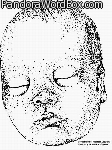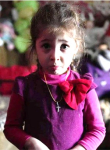Our websites offer information mostly for educational purposes with no intent to alter health care protocols nor to serve as a sole source of medical information.
Always seek the advice of your local health care provider.
|
×  Get the Point! PAIN – WOMAN – UKRAINE – PUTIN MOTHER – SISTER – SPOUSE – MOTHER RUSSIAN WAR – HOLOCAUST – GENOCIDE |
TERATOLOGY - DYSMORPHOLOGY
Semiology - Syndromology
Symptoms - Signs
Pathogenesis - Etiology - Diagnosis - Prognosis ... Natural History
In my view, Dysmorphology is a component of Teratology and represents a clinical discipline focused upon malformations. It is self evident that the above notions are complex, of general medical interest, and defined within a variety of perspectives. Here, my intent is to articulate the components of the above notions, as they underscore the role that clever clinicians have confronted with human developmental alterations.
Esentially, "dysmorphism" implies altered morphology. With the development of the sciences of Teratology and Medical Genetics, the study of "birth defects" (a euphemism for structural malformations) led to the rapid growth of "syndromology".
Dysmorphology refers to a discipline focused upon the study of the alterations of developing functions and/or morphologic structures due to negative impacts either genetic or environmental in nature. Gene and chromosomal mutations, as well as teratogens, may produce similar alterations and quite often, both categories are interactive or additive (multifactorial). Among the most sensitive developmental system is the capacity to learn: notably, intelligence. Though it is a broad notion, it is not sufficiently broad to the whole spectrum of cerebral functions. Terms like "mental retardation" are pejorative and lack precision. Terms like oligophrenia, hypomentia, etc. do not add much. For the present, it is customary to rely on descriptive terms stressing functionality of behavior, memory, emotional control, sociability, etc. In summary, some professionals seek to separate "Behavioral Teratology" from structural emphases. Perhaps, it is preferable to stress that Dysmorphology includes behavioral and morphogenesis perspectives. In any case, functional anomalies are significantly more frequent than structural anomalies.
This is continued in the companion web-site Clinical Eye Openers.
20170210 kcw








